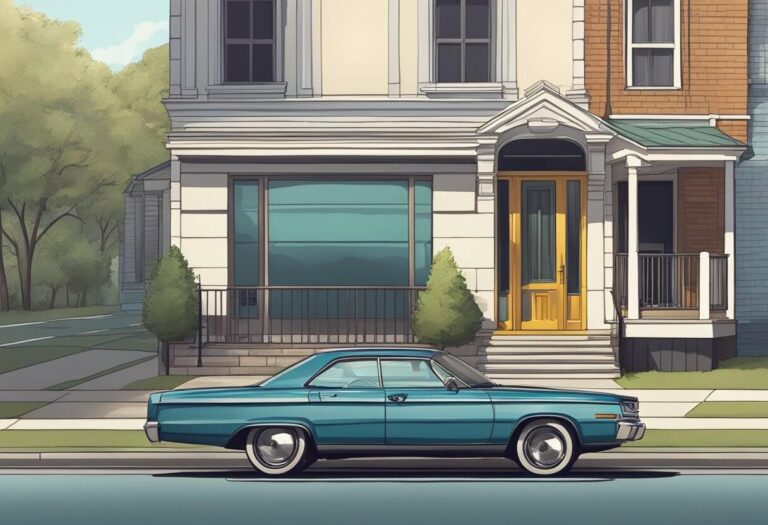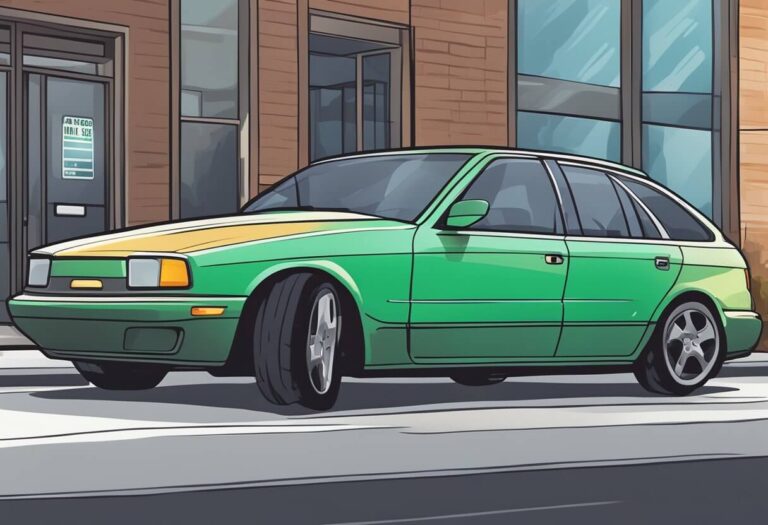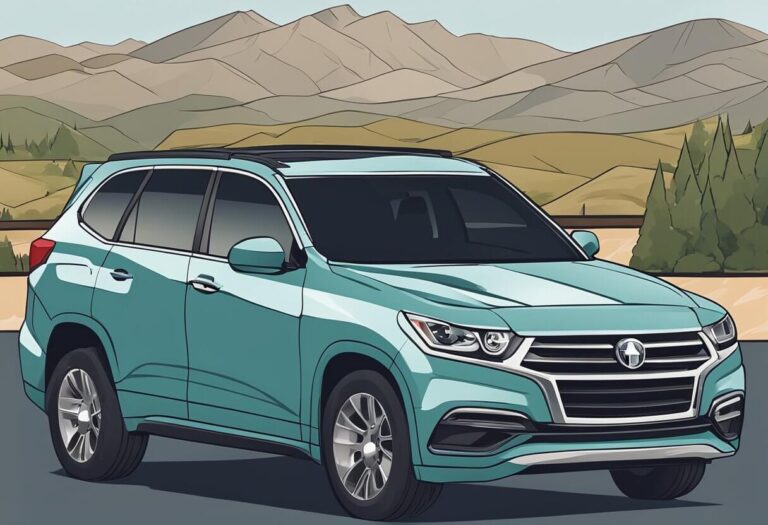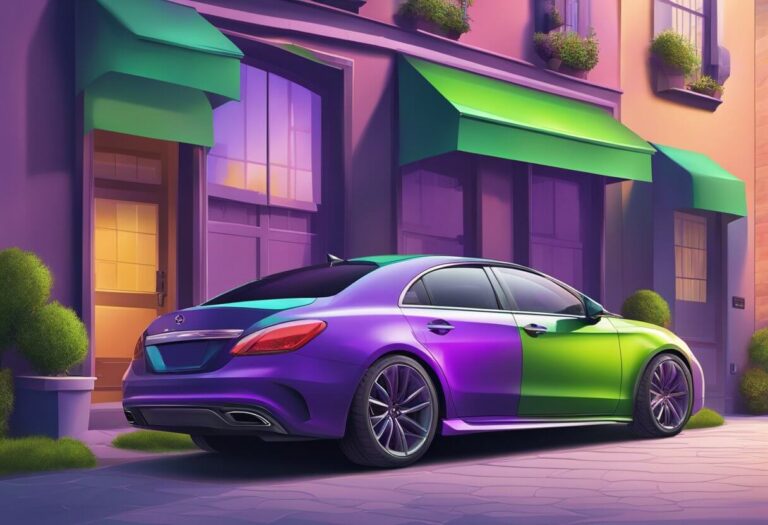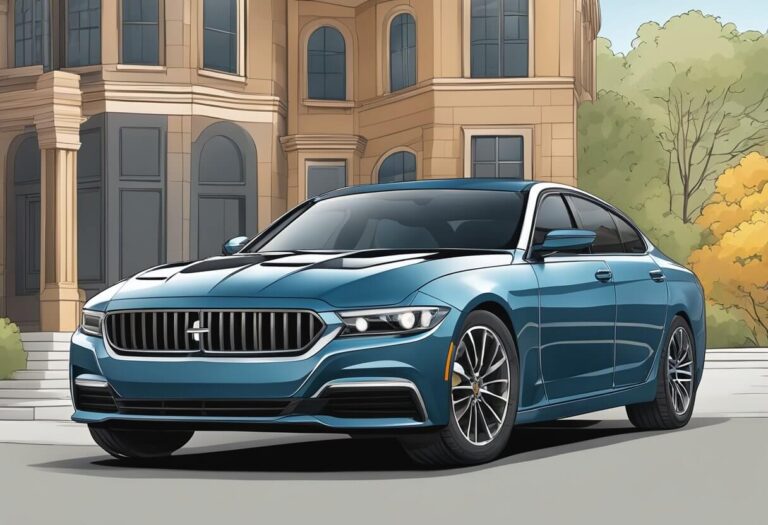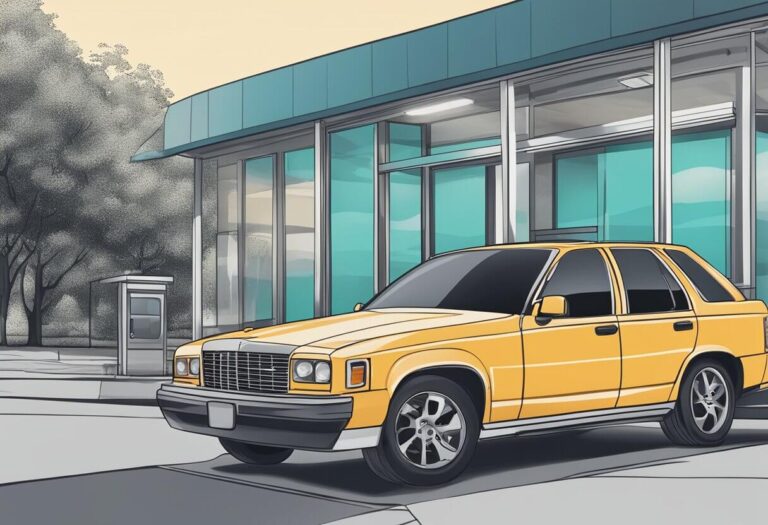Is Tail Light Tint Legal? Everything You Need to Know
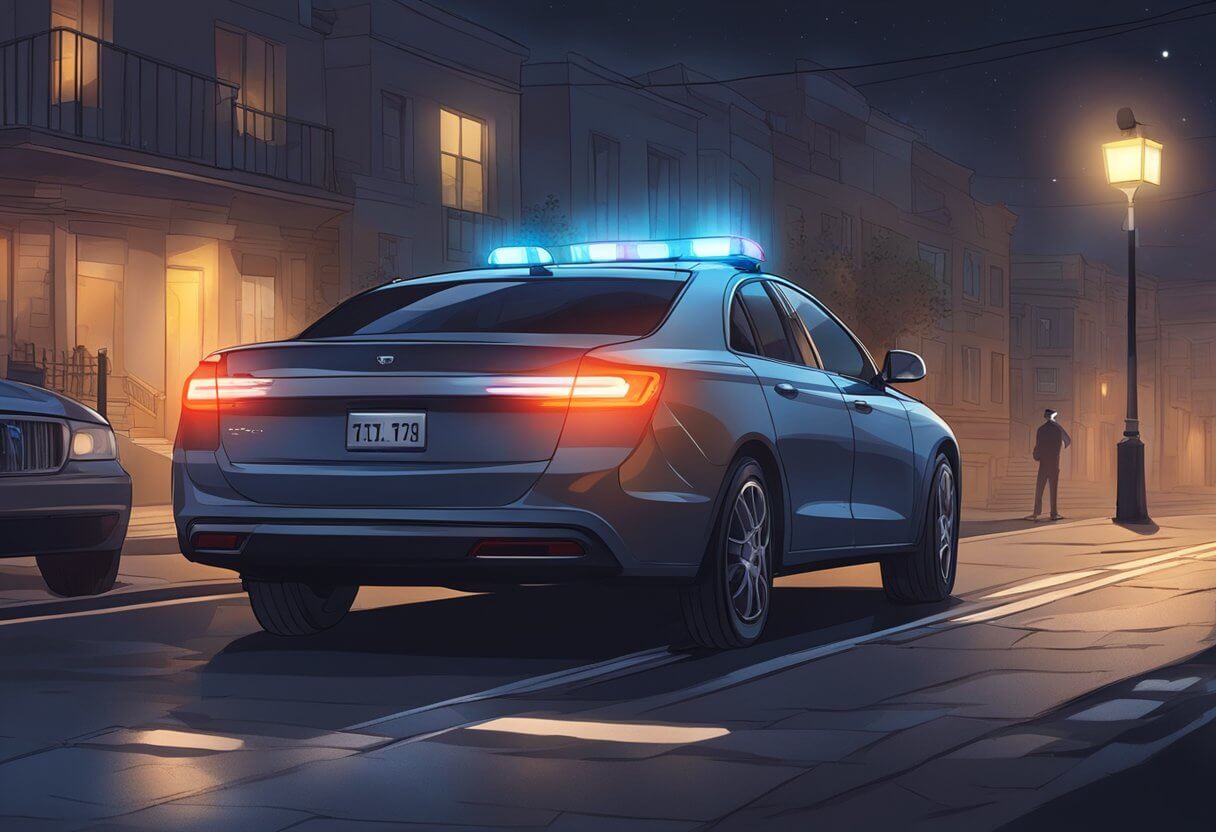
Modifying your vehicle is a great way to make it look unique. Many car enthusiasts opt to tint their tail lights for a sleek, modern appearance. But is tail light tint actually legal?
The short answer is – it depends. Laws regarding tinted tail lights vary widely across the country. In some states it is completely prohibited, while other states allow certain shades and visibility minimums. Most regulations revolve around maintaining adequate lighting performance.
In this comprehensive guide, we’ll cover all the key questions around tail light tint legality:
- What are the laws and regulations regarding smoked or tinted tail lights?
- Can you get fines or penalties for non-compliant tail light tint?
- How much light blockage percentage is typically permitted?
- Do tinted tail lights pass vehicle inspections?
- How does tail light window tint differ from standard automotive window tint?
- What practical alternatives give the smoked tail light look legally?
- And more…
By the end, you’ll know exactly what is and isn’t allowed for your state, plus understand regulations across the country. Time to shed some light on the matter!
What are the Laws Regarding Tinted Tail Lights?
There are no federal laws in the United States specifically pertaining to tail light tinting. Instead, regulations are determined on a state-by-state basis. And furthermore, counties, cities, and municipalities often set their own local statutes as well.
This means that what’s legal in one area may be prohibited in another – even if they border each other!
That said, some common themes apply to tail light tint legality across most regions:
- Visibility Distance – Tail lights with any kind of tint must still be plainly visible from at least 500 feet away in all states. Though requirements range from 100m to 1000ft depending on location.
- Light Output Percentage – In regions where tinting is permitted, the darkness of the film is limited based on how much it reduces the tail light’s brightness. 20-30% visible light transmission (VLT) is generally the maximum obstructed.
- Color – Tail lights must emit red light. Tint colors that alter this to yellow, blue, or black would make them non-compliant.
- Photometric Performance – Even with mild tinting, luminance output must still meet federal motor vehicle safety standards in most states.
- Inspection Rules – Tinted tail lights often have to pass annual vehicle inspections even if they meet legaltinting limits, or film will have to be removed.
To ensure your particular tail light modifications are street legal, always check your local and state statutes first. Never assume tinted tail lights are allowed or prohibited without consulting official regulations.
In Which States are Tinted Tail Lights Illegal?
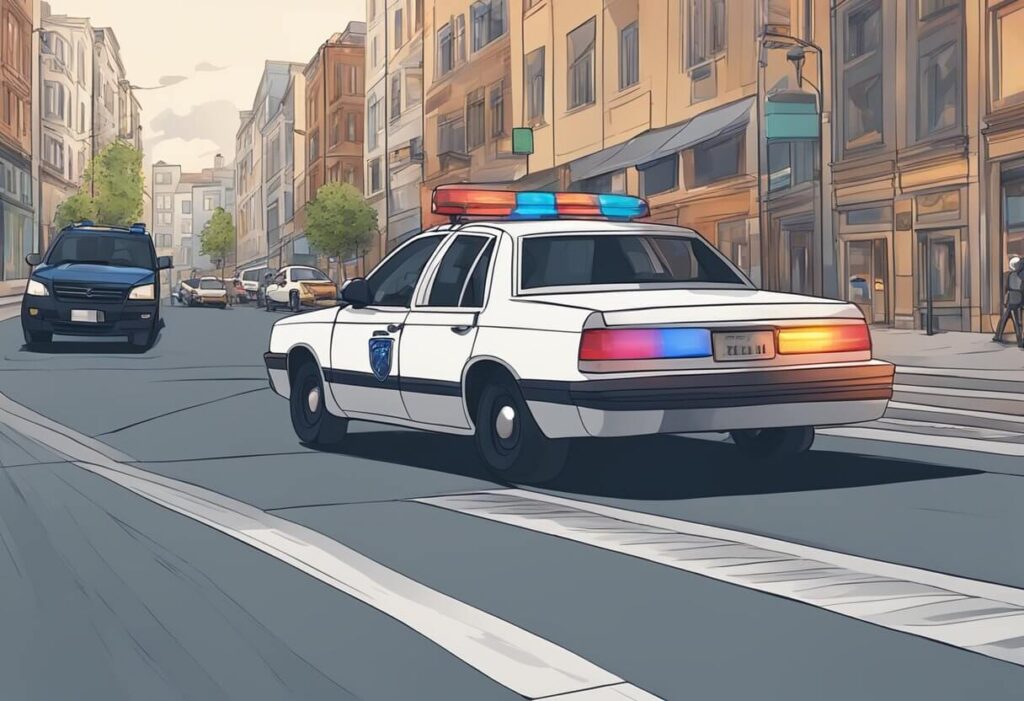
There are 6 states that explicitly outlaw any kind of aftermarket tint film or smoke effect on tail lights:
Illinois
North Carolina
Pennsylvania
Tennessee
Vermont
Wisconsin
Additionally, certain counties and cities in other states like Texas and California ban tail light tinting or have very strict visibility rules.
However, most states simply limit legal tail light tint based on performance and safety considerations, rather than prohibiting it entirely. Common constraints involve maximum light reduction, minimum brightness, and inspection compliance.
But when in doubt – confirm your particular state tail light statutes before making any rear lighting modifications!
How to Check if Tinting Your Tail Lights is Legal?
The best way to determine whether or not tinted tail lights are legal is to check with your local municipality or division of motor vehicle services (DMV).
Most state departments of transportation have specific regulations around required tail light performance and permitted modifications. For example, Chapter 12 of the Illinois Vehicle Code covers compliant tail lamp configurations.
You can also try contacting your regional police department for clarification on enforcement policies. But keep in mind that actual statutes supersede any guidance from law enforcement.
If you’re hoping to tint just one tail light, checkBOTH state laws and your vehicle owner’s manual. Most states require symmetry, but some allow single side tinting. And manufacturer guidelines may prohibit mixing original and aftermarket lights.
When in doubt, it’s always best to play it safe and avoid any questionable tail light tinting. The cost savings isn’t worth the risk of traffic tickets or accidents from reduced visibility.
What Percentage of Light Blockage is Allowed for Tail Light Tint?
The amount of permissible light blockage depends on your state and local ordinances. In regions where tail light smoke film or tint is allowed, limits typically range from 20% to 50% visible light transmission (VLT).
In other words, the darkest shade that would be legal blocks 50% of emitted light. Anything darker than 50% VLT likely violates visibility minimums.
However, it also depends on the base brightness of your tail lights. If your stock tail lamps are exceptionally bright, you may be able to get away with slightly darker tint while still meeting the mandated minimum luminance.
But in general:
- 20-30% VLT tail light window tint isplaying it safe for legality
- 35-45% VLT offers solid smoke effect without pushing boundaries
- Over 50% VLT is either prohibited or risky
When applying any kind of tint to your tail lights, be conservative. And get them inspected to guarantee compliance, or remove the film if required in your area. Safety should come before personalization.
Can You Get Pulled Over for Having Tinted Tail Lights?
Yes, in areas where tail light smoke film is prohibited, you can absolutely get pulled over and ticketed just for non-compliant lamps.
Common citations issued for illegal tinted tail lights include:
- Fix-it tickets – Forced tail light modification or removal
- Non-moving violations – Fines without license points
- Equipment violation fees – Penalties similar to an expired registration rather than speeding
Additionally, havingtail lights that emit colors other than red can be enough probable cause for an officer to perform a traffic stop. Even in states that allow mild tint.
Enforcement is usually based on visibility and performance factors. As long as you can clearly see the tail lamps operating from the mandated distance, and the brightness meets regulations, you are unlikely to attract attention.
But always comply with your local statutes to avoid tail light related stops or consequences. Don’t leave it up to an officer’s discretion.
Do Smoked or Tinted Tail Lights Pass Inspection?
Whether or not smoked or tinted tail lights will pass annual vehicle safety inspections depends on the regulations in your state.
For example, Pennsylvania prohibits any kind of tail light tinting. So any applied film would fail and require removal.
Whereas states like Florida permit certain tail light window tint as long as lamps meet brightness and visibility rules. Both stock and compliant tinted tail lights would pass FL inspection.
And some regions don’t include tail lamp inspection at all if the bulbs are clearly functional. Allowing mild modifications without issue.
To ensure your personalization efforts don’t go to waste due to failed inspection, check testing policies and talk to your local mechanic before adding tint. Never assume it will automatically pass or fail.
What are the Fines or Penalties for Illegal Tinted Tail Lights?
If your tail lights violate state equipment regulations, you’ll generally receive a non-moving “fix-it” citation.
This means you pay a fine but don’t get points added to your license that would impact insurance rates. The penalty is typically $25-$250 depending on your jurisdiction.
When you get the ticket, you will also be required to remove the non-compliant tint film andconfirm corrected operation within a certain timeframe to avoid additional fees.
How aggressively tinted tail light infractions are enforced varies greatly across the country. In some regions officers actively scout for illegal lighting and regularly issue citations. While in other areas it is rarely regarded as a high priority traffic violation.
You might get away with unlawful tinted tail lights for a while. But it’s never worth risking a ticket or dangerous accident just for looks. Always know your local regulations.
How Does Tail Light Tint Differ from Window Tint?
There are a few key differences between tail light window tint and standard automotive window tinting:
Visibility – Unlike privacy window films, any tint on tail lamps cannot obstruct emitted light over certain state-mandated limits. Tail light tint must allow required luminance based on distance regulations.
Performance – High heat and intensity from brake lamps and turn signals requires specialized film. Regular tints can melt or bubble, dangerously reducing visibility. Only use purpose-made automotive tail light tint.
Legality – Window and windshield film legality focuses on darkness and location in the vehicle. Tail light tint regs revolve around visibility minimums, brightness standards, color output, and more. Much more complicated!
Application – Applying tint neatly to a flat window is easier than wrapping contours and recesses on tail light housings. Professional installation is ideal for tail lamps.
In summary, don’t use standard privacy window films on your tail lights! Always opt for specialty products designed specifically for safe tail light smoke effects and performance.
What Color Must Tail Lights Be by Law?
Across the vast majority of states, tail lamps MUST emit red light only. This applies to both the running lamp and brake lamp elements.
Additionally, turn signals incorporated into the tail light housing must shine amber or yellow light when activated.
Any kind of film, coating, or replacement lens that changes the factory rear lighting color is strictly prohibited under most equipment regulations.
Typical examples of unlawful tail light colors include:
- Smoked blackouts
- Blue tinted lenses
- Green brake lamps
- White running lights (aside from backup lamps)
Even slightly altering or dimming the mandated red and amber hues can result in citations and vehicle inspection failures. Maintaining OEM spec tail lamp color output is essential for road legal operation.
The few exceptions that allow some tail light color personalization are typically off-highway vehicles not driven on public roads. Such as ATVs and racing trucks exclusively operated on private land.
Is it Legal to Tint Just One Tail Light?
Whether or not tinting only one tail lamp passes regulations depends on your local laws. But the short answer is typically no – asymmetry is illegal.
Most state vehicle codes explicitly prohibit any kind of rear lighting mismatch. Tail lamps, reflectors, turn signals, and more must all match in appearance and performance on both sides.
Of course non-functional damage can’t be helped temporarily. But intentional modification of just the driver or passenger tail light violates statutes in most areas.
However, a small number of regionsdo permit single tail light window tinting or smoke effects. As long as visibility and brightness specifications are upheld.
For example, Arizona regulations only dictate tail light functionality, without any symmetry or appearance requirements.
Before deciding to tint just one lens for a unique look, thoroughly review both state and local ordinances regarding allowable tail lamp modifications. And check your vehicle owner’s manual regarding mixing stock and aftermarket lighting.
Can You Tint Tail Light Covers or Replacements?
Tinting tail light covers or replacement housings falls into a grey area Depending on your state laws and enforcement policies.
If the regulation specifically prohibits ANY kind of film or coating that reduces light output by more than a set percentage, then even replacement lamps couldn’t have dark tint.
But transformer-style overlays and lightly smoked or amber-tint lens replacements are often permissible. As long as they meet factory brightness and visibility standards when installed.
You typically can’t remove the stock tail light assemblies and replace them with heavily tinted aftermarket lamps though. Especially blacked out or bright blue ones. Since color and performance limits would definitely be exceeded.
As always, check your local statutes before modifying tail lamps. Don’t assume replacement = legal, even if professionally manufactured. Custom tail lights are popular but not necessarily road compliant depending on your area.
What are Some Alternatives to Tint for Custom Tail Lights?
If you find out that smoking or tinting tail lamps is prohibited in your jurisdiction, consider these alternative options to customize your rear lighting:
Tail Light Covers – Clear or lightly amber tinted outer wraps maintain legal performance while altering the look.
Overlay Film – Transparent vinyl overlays can produce cool designs without reducing brightness.
Rear Window Tint – Darken and color the rear window instead within legal limits.
Lower Trim – Add color-matched panels or trim frames around tail lamp openings.
Rear Badges – Extra badges, lettering, or designs on lower bumpers and the rear hatch.
Rear Plate Delete – Shaved badgeless hatch with custom designed plate relocation.
Light Bars – Small supplemental bars above tail lamps for a unique nighttime glow.
Get creative with legal methods to style your rear lighting area, without actually reducing critical tail lamp performance through excessive tinting. Safety first!
Is it Ever Legal to Have Fully Blacked-Out Tail Lights?
No, blacked out tail lights with zero light emission that completely obscure brake lamps and turn signals are never legalfor road use.
The only exception would be show cars transported on trailers from event to event that are not driven at all. As well asoff-highway vehicles exclusively operated on private property with no public road access.
Any car, truck, or motorcycle that is driven on public roads – regardless if registered, insured, and plated for legal operation – cannot have blacked out tail lights. It simply violates the most basic visibility and safety statutes in all states.
So don’t even think about blacking out tail lamps on your daily driver or weekend cruiser unless you never go on public roads. Race cars that get trailered to the track are about the only street-legal vehicles that can pull off the blacked out look legally.
How to Find the Best Tail Light Tint Installer
Since most tail light tint jobs require careful precision and mastery of specialized materials, professional installation is highly recommended. Here are some tips for finding a qualified shop:
- Search for dedicated “tint and wrap” installers, rather than general custom shops. Specialization in window film application is a must!
- Verify they have physical shop facilities, not just mobile service. This demonstrates investment in quality tools and materials to handle high-end jobs.
- Evaluate online photo galleries to assess experience with precision tail light kits and finishes. Actual examples are telling.
- Only use installers that offer a lifetime warranty against bubbles, listing, yellowing or any defects that reduce legal light output. Product and craftsmanship guarantees speak volumes about true professionals.
- Read Google Maps and Yelp reviews carefully. Complaints about visibility issues, failed inspections, or required rework indicate poor grasp of legal standards.
- Ask exactly which specialty films and finishes will be used. 3M and other commercial grades ensure high heat durability.
- Get quotes for computer-cut kits for your exact vehicle make and model. Custom one-piece kits exemplify attention to detail and manufacturer distributor relationships.
Take your time vetting tail light smoke tint installers rather than jumping on the cheapest craigslist ad. Skilled application is crucial for crisp visibility and legal compliance.
Frequently Asked Questions about Tail Light Tint Laws
Is it illegal to drive with a broken tail light?
Yes. Non-functional tail lamps violate equipment standards in all states. Just burn out a bulb as soon as possible since cracks or damage let in moisture than can disable lighting.
Can you get a ticket for having aftermarket LED tail lights?
Aftermarket tail lamps must meet state lighting regulations just like stock assemblies. Clear functionality and visibility is required. Overly-bright or incorrectly colored LEDs can warrant citations. Always install compliant assemblies.
Is it legal to smoke both headlights and tail lights?
Nope! Headlight appearance mods like tint films or blackouts almost always violate the law. Headlamps necessitate completely clear untinted lenses to achieve maximum nighttime visibility. Only tail lights (with caution) have wiggle room for light smoke effects.
Can you pass inspection with tinted tail lights?
It depends on state inspection rules. Some states only check that bulbs work, allowing cosmetic mods. Others prohibit ANY kind of tint or require film removal before approving annual tests. Check policies before assuming colored lenses will pass or fail.
Do I need turn signals if I have brake lights?
Yes. Separate amber rear turn indicators are mandatory equipment alongside red brake lamps in all states. Brake lamps can’t pull double duty for signaling turns or lane changes. Both are essential independently.
Conclusion
Hopefully this guide has helped shed some light on the frequently asked question of whether or not tinted tail lights are street legal where you live.
The most important takeaways when considering smoked or colored tail lamps on your daily driver are:
- ALWAYS check your state and local vehicle equipment regulations first before modifying tail lamps
- Determine maximum permitted light reduction percentages in your region
- Only use specialized automotive tail light tint film applied by professionals
- Confirm visibility minimums are upheld after tinting
- Be prepared to remove tint that doesn’t pass annual inspections
While tinted tail lamps can give your car, truck or bike a great customized appearance, they require caution and research to stay on the right side of the law. Don’t let illegal lights put you and other motorists in danger!
Stay safe on the road, and don’t hesitate to reach out with any other questions about safely personalizing your ride!

